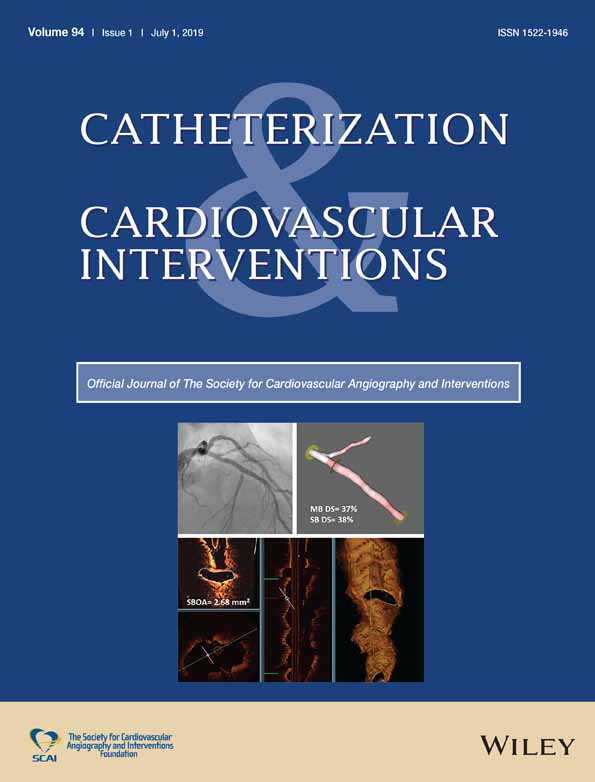Highly-calcific carotid lesions endovascular management in symptomatic and increased-stroke-risk asymptomatic patients using the CGuard™ dual-layer carotid stent system: Analysis from the PARADIGM study
Funding information: Jagiellonian University Medical College, Grant/Award Number: K/ZDS/007819
Abstract
Objectives
To assess feasibility, safety, angiographic, and clinical outcome of highly-calcific carotid stenosis (HCCS) endovascular management using CGuard™ dual-layer carotid stents.
Background
HCCS has been a challenge to carotid artery stenting (CAS) using conventional stents. CGuard combines a high-radial-force open-cell frame conformability with MicroNet sealing properties.
Methods
The PARADIGM study is prospectively assessing routine CGuard use in all-comer carotid revascularization patients; the focus of the present analysis is HCCS versus non-HCCS lesions. Angiographic HCCS (core laboratory evaluation) required calcific segment length to lesion length ≥2/3, minimal calcification thickness ≥3 mm, circularity (≥3 quadrants), and calcification severity grade ≥3 (carotid calcification severity scoring system [CCSS]; G0-G4).
Results
One hundred and one consecutive patients (51–86 years, 54.4% symptomatic; 106 lesions) received CAS (16 HCCS and 90 non-HCCS); eight others (two HCCS) were treated surgically. CCSS evaluation was reproducible, with weighted kappa (95% CI) of 0.73 (0.58–0.88) and 0.83 (0.71–0.94) for inter- and intra-observer reproducibility respectively. HCCS postdilatation pressures were higher than those in non-HCCS; 22 (20–24) versus 20 (18–24) atm, p = .028; median (Q1–Q3). Angiography-optimized HCCS-CAS was feasible and free of contrast extravasation or clinical complications. Overall residual diameter stenosis was single-digit but it was higher in HCCS; 9 (4–17) versus 3 (1–7) %, p = .002. At 30 days and 12 months HCCS in-stent velocities were normal and there were no adverse clinical events.
Conclusion
CGuard HCCS endovascular management was feasible and safe. A novel algorithm to grade carotid artery calcification severity was reproducible and applicable in clinical study setting. Larger HCCS series and longer-term follow-up are warranted.




